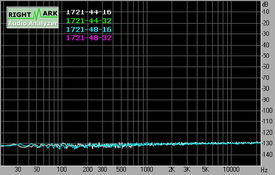动态范围搜索范围、动态
可能重复: Fast算法可以迅速找到号码属于一个范围集合的范围?
鉴于这是不重叠的和排序(rangeList)号码范围的列表,和一个号码,编写一个有效的算法首先找到(部分范围中)rangeList是否存在此数目,如果它存在,返回正确的范围内。
Given a list of range of numbers that are non-overlapping and sorted (rangeList), and a number, write an efficient algorithm to find first whether this number exists in (some range in) rangeList and if it does exist, return the correct range.
例如rangeList = [( - 1,200),(300,2000),(2011,2300)]
For example rangeList = [(-1, 200), (300, 2000), (2011, 2300)]
查询1:1000 - >(真,(300,2000))自1000位于300和2000之间。
Query 1: 1000 -> (True, (300, 2000) ) since 1000 lies between 300 and 2000.
问题2:250 - >(假,(无,无)),因为没有250不在列表中的任何范围存在
Query 2: 250 -> (False, (None, None) ) since no 250 does not exist in any range in the list.
最好的算法,我想出了是使用二进制搜索日志N。这感觉就像尤其是对经度/纬度基于搜索一个非常普遍的问题。任何想法,使这个比数N +
The best algorithm I have come up with is log N using binary search. This feels like a very common problem especially for Longitude/Latitude based searches. Any ideas to make this better than log N?
推荐答案
我不知道这将完成你想要的,但它是一个镜头。这将包括为O(n)preprocessing一步,作为回报,将提供一个机会,在O(1)运行时间对于任何给定的查询对空间复杂度平衡(通过参数C)。如果您rangeList经常变化,这可能不会是有帮助的。
I'm not sure this will accomplish what you want, but it's a shot. It would involve an O(n) preprocessing step, and in return would offer a chance at O(1) runtime for any given query balanced against space complexity (via the parameter c). If your rangeList changes frequently, this will probably not be helpful.
preprocessing步骤:
Preprocessing steps:
找到总范围范围之列(可接受的最低值和最高的,尽管会有差距之间)。 O(1)
Find the "total range" of the list of ranges (lowest acceptable value and highest, though there will be gaps in between). O(1)
选择一个浓度参数C(整数)为你想有多少个在这个范围内进行评估。 O(1)
Select a concentration parameter c (integer) for how many points you'd like to evaluate in that range. O(1)
创建一个映射功能,整数[1,C]映射到步骤1中找到的总范围,也可以做相反的(这是没有更复杂的超过摄氏,华氏转换)。也为O(1)
Create a mapping function that maps integers [1, c] to the total range found in step 1, and can also do the inverse (this is no more complicated than a Celsius-Farenheit conversion). also O(1)
使用映射函数,确定对应于[1,C]在总的范围之分。通过扫描范围的列表中,当您去评估这些点,存放在长度C数组的答案((真,(300,2000))等)(我们称之为数组评为)。 O(N + C)
Using the mapping function, determine the points in the total range that correspond to [1, c]. Scan through the list of ranges, evaluating these points as you go, storing the answers ( (True, (300, 2000)), etc.) in an array of length c (let's call the array "Evaluated"). O(n + c)
在收到的查询:
使用映射函数的查询号码转换,在总范围 - > [1,C]方向。如果转换后的数字超出范围[1,C],返回(假,无,无)。 O(1)

Use the mapping function to convert the query number in the "total range" -> [1, c] direction. If the converted number falls outside the range [1, c], return (False, None, None). O(1)
取转换数字的天花板和地板,它会给你两个整数a和b。比较评估的[a]和评估的并[b]。如果它们包含了相同的答案,返回它(如果你的转换后的数字已经是一个整数,返回评估的[转换后的数字]直接)。 O(1)
Take the ceiling and floor of the converted number, which will give you two integers a and b. Compare Evaluated[a] and Evaluated[b]. If they contain the same answer, return it (if your converted number was already an integer, return Evaluated[converted number] directly). O(1)
如果求值[A]和评估[B]给出不同的答案,你必须做一个二进制搜索。但你至少可以启动A和B之间的搜索在半路,映射回范总。
If Evaluated[a] and Evaluated[b] give different answers, you have to do a binary search. But you can at least start the search at halfway between a and b, mapped back into "total range".
上一篇:LCS算法(例如)算法、LCS
下一篇:海明系列的代海明、系列










